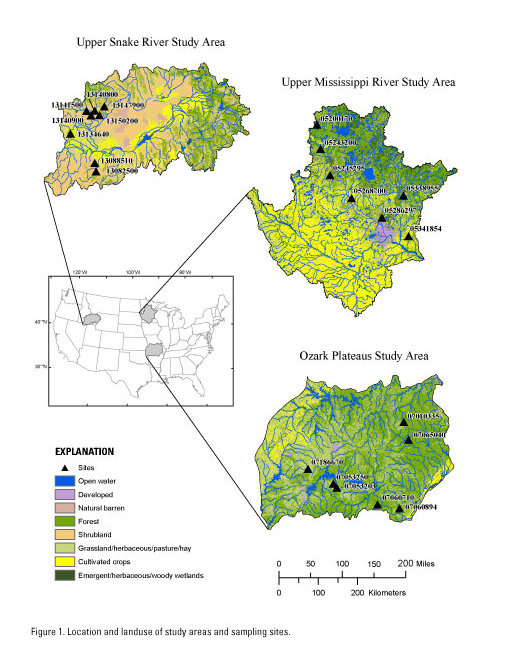Project Title: UMIS NAWQA-NEET
Project Number: 8607CRN - MN 141
Project Start Date: October 1993
Project End Date: Ongoing
Project Chief: Lee, Kathy

Objectives:
The U.S. Geological Survey (USGS) nutrient enrichment studies were planned and implemented through the National Water-Quality Assessment (NAWQA) Program. In 2001, the NAWQA Program began an intensive study of nutrient enrichment - elevated concentrations of nitrogen and phosphorus - in streams in agricultural basins across the Nation. Five study units were sampled in 2002, with three additional study units added in 2006. This study is providing nationally consistent and comparable data and analyses of nutrient conditions, including how these conditions vary as a result of natural and human-related factors, and how nutrient conditions affect algae and other biological communities. This information will benefit stakeholders, including the U.S. Environmental Protection Agency (USEPA) and its partners, who are developing nutrient criteria to protect the aquatic health of streams in different geographic regions.
The field collections were completed in 2006-2008 at 30 sites within the UMIS basin. During 2007, 30 sites were sampled twice. Samples were collected for the analysis of nutrients, suspended sediment, seston chlorophyll a. Biological collections including benthic algae and benthic invertebrates were also completed. During 2008, a subset of the 30 streams was selected for temporal sampling. Seven sites in the UMIS were sampled monthly during 2008. Processes controlling stream metabolism and nutrient cycling were assessed in at Valley Creek near Afton Minnesota during 2006. This more detailed, small-scale studies was conducted to determine the effects of stream processes on biological communities.
Progress During 2011
a paper describing the temporal patterns in nutrients and biological responses in three areas of the country: Upper Mississippi River, Upper Snake River, and the Ozark Plateaus was prepared and in review.
More NEET information can be found at the NAWQA Project Website
| 
